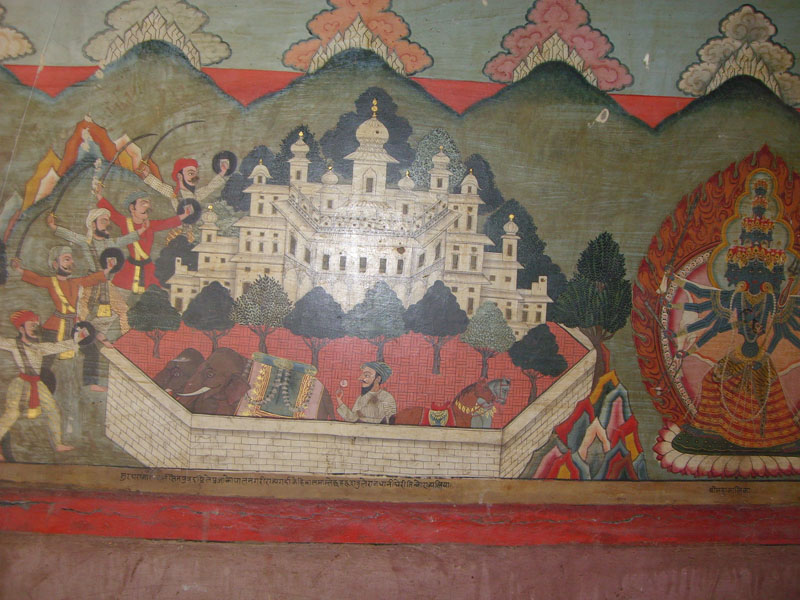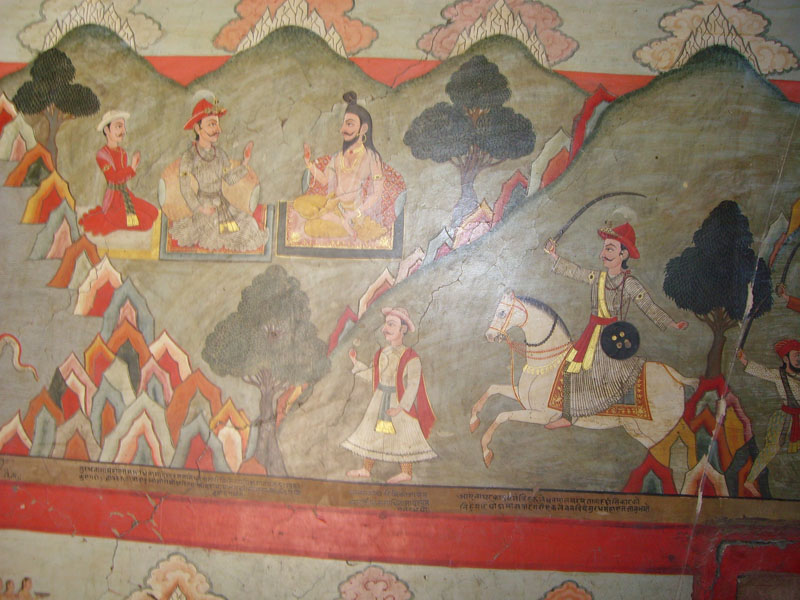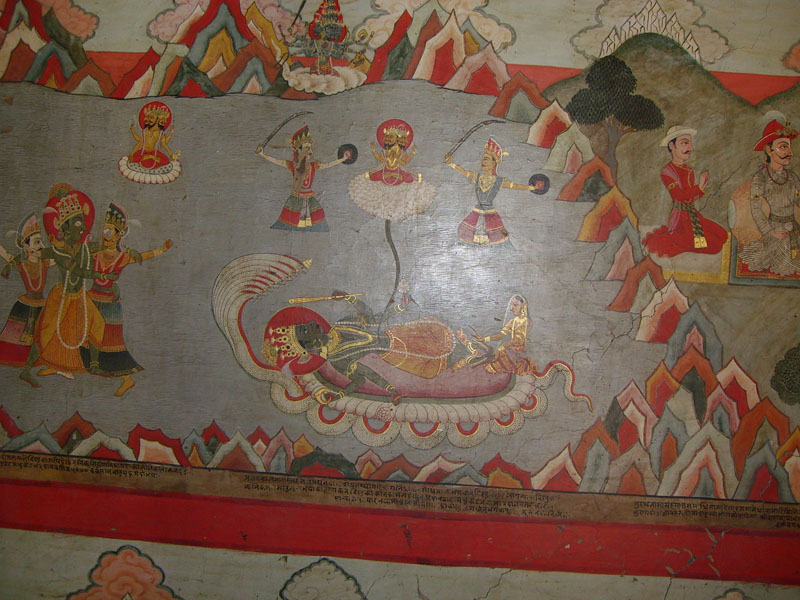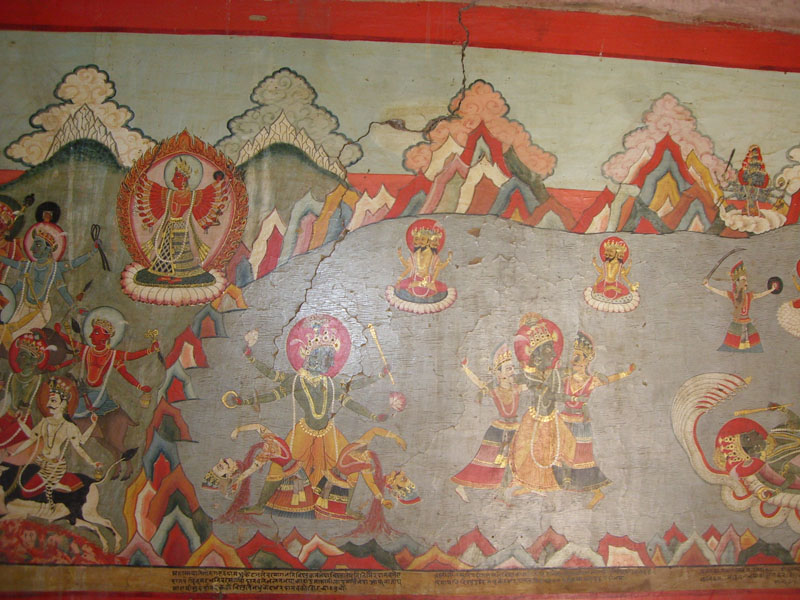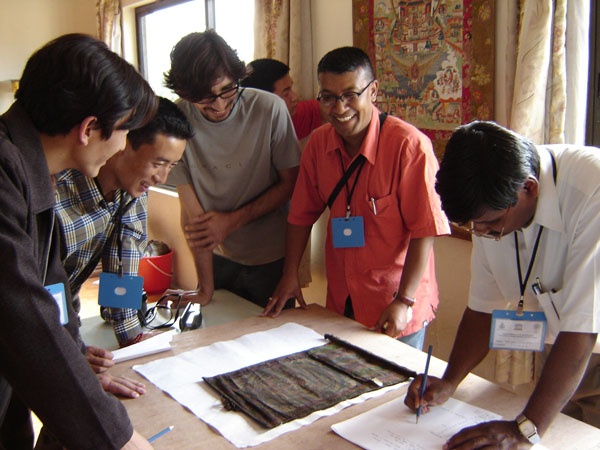In Nepalese Historical context, different types of arts have been developed. Among these, stone sculpture has been developed during 3rd and 4th centuries. In the 17th century , wooden art, metal art and architecture have been developed to the extreme. When we talk about arts, painting art can not be excluded as it has its own importance in theses aspect .In Nepal three different types of paintings are found.
1.Mural Painting (wall Painting)
2.Thangka Painting
3.Manuscript Painting
Mural Painting
Generally mural painting are made based upon events of religious, mythological and historical scene. In a condition of Nepal,The wall painting in tempera technique, condition of wall paintings were very dirty, and covered with dust, dirt, cobwebs were present in several areas, smoke ,oily ,insect nest etc…It can see leakage of rainwater from the roof in several areas such that plaster along with painting had fallen in several areas ,cracks were present in the roof surface and painting surface of the wall caused by earthquake, human vandalism and unwanted activities of man…
Smoke ,oil covering on paintings is due to burning of ghee, and oil lamp during worshiped of the god…
Mostly paintings are inside and outside of the temple, palaces and monasteries these are the main causes of deterioration of mural paintings.
Causes of deterioration:
1.Leakage of rainwater
2.carelessness
3.Human vandalism
4.Unwanted activities
5.Temperature
6.Climate
7.Relitave humidity
In these above mentioned, the mural are damaged
For treatment or conservation:
The following processes were carried out to solve the above mentioned problem:
1.The Phothgraphs were taken
2.Dust and dirt were removed by brush and cotton swab
3.The cracking and flaking areas were fixed with adhesive fluid(fevicol) by syringe then pressing.
4.The lost parts of plaster were filled with paste of plaster (mud plaster).
5.The smoke and oily dust materials were removed and cleaned by using solvent like ethanol, acetone,
ammonia, trichloroethanol and distle water etc..
6.Retouching only in filling part and fading colour
7.Newly filled portion on the wall were retouched according to match with the surrounding part.
8.It is nesseary to match the new colour with the original painting.During retouching we have to careful not overlaping the original colour.
9.Reintegration in trateggio technique.
10.Finally all the wall painting were coated with 3% P.V.A. or Paraloid B72 dissolve in sulpher free toluene for preservation.
11. Again taken photography.
Development of wall paintings in Nepal
In Nepal, development of mural painting in Bhaktapur City, one of the three cities of Kathmandu valley, can be considered .The oldest mural painting are in Mul chowk of 15th century. During the reign of Malla Kings in the 17 th century ,55 windows of Bhktapur palace, .the first stored of Pujari math of Sukuldhoka in the same city,Sundari Chowk of Patan ( also called Lalitpur) ,Mohan chowk of Hanuman dhoka Darwar in Kantipur, kumari Ghar in Basantapur ,Santipur in swayambhu have its own importance ..
Developments of mural paintings was not end at these places only. Its development spread all over Buddhist’ Bihar and Hindus Temples.
In northern Nepal, mural painting are illustred on the wall of Buddhist’monastries in Mustang district, Lomang thangumba and Tukche in Lukla,Namche bajar ,Tarkeghyan Gumba in Helambu.These can also be considered as a development of mural painting.
Among these paintings we want to talk about the wall paintings inside the famous Shantipur Temple of Swayambhu. The walls of the said Shantipur temple were constructed by the famous King Pratap Malla of the 17 th century painted during the reign of King Prithivi Bir Vikram by a person named Harsa Man Chitrakar in memory of his deceased parents. It has been substantiated by his own record surviving there that he has merely restored the wall painting already existing there. Possibly in lieu of restoration the wall might have been painted a fresh in a new way. In addition to the painting of major goddesses, the interior part of the temple contained pictures portrayed on lines about 7 and half ft.high and these pictures are depicted in a row. These pictures are mostly connected with the events relating to the Swayambhu Purana of which the scene of Maitreya Bodhisattva preaching sermons to the assemblage of his disciples and the picture of Manjushree are specifically notable. Under most of the pictures, the events relating to the picture are written. The exterior parts of the Bagh Bhairab located at kirtipur contain wall painting of the final Malla period and the interiors rooms of the Thapathali Durbar contain wall paintings of early Rana Period.
Miss Surya Kumari Manandhar is a senior Art Conservator Since 1997. She has many experiences in art conservation. Here are some bio data and some illustrate of Miss Surya Kumari Manandhar.
Name: Surya Kumari Manandhar


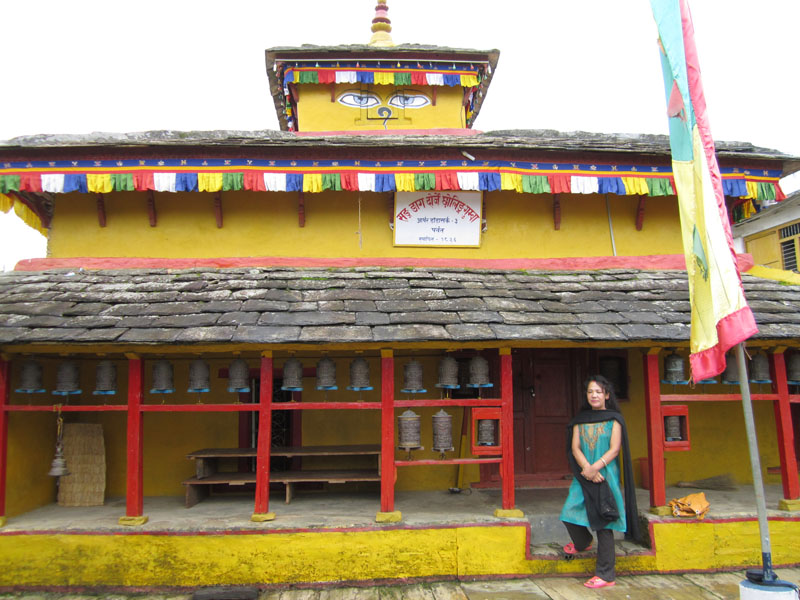
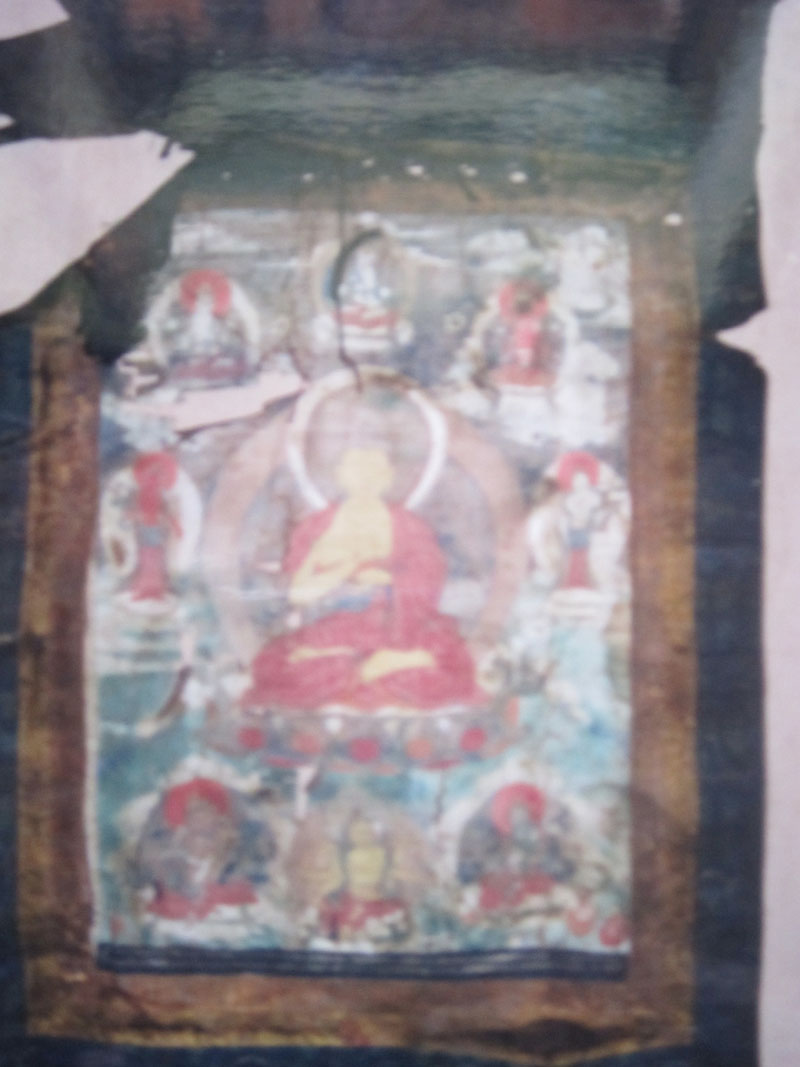
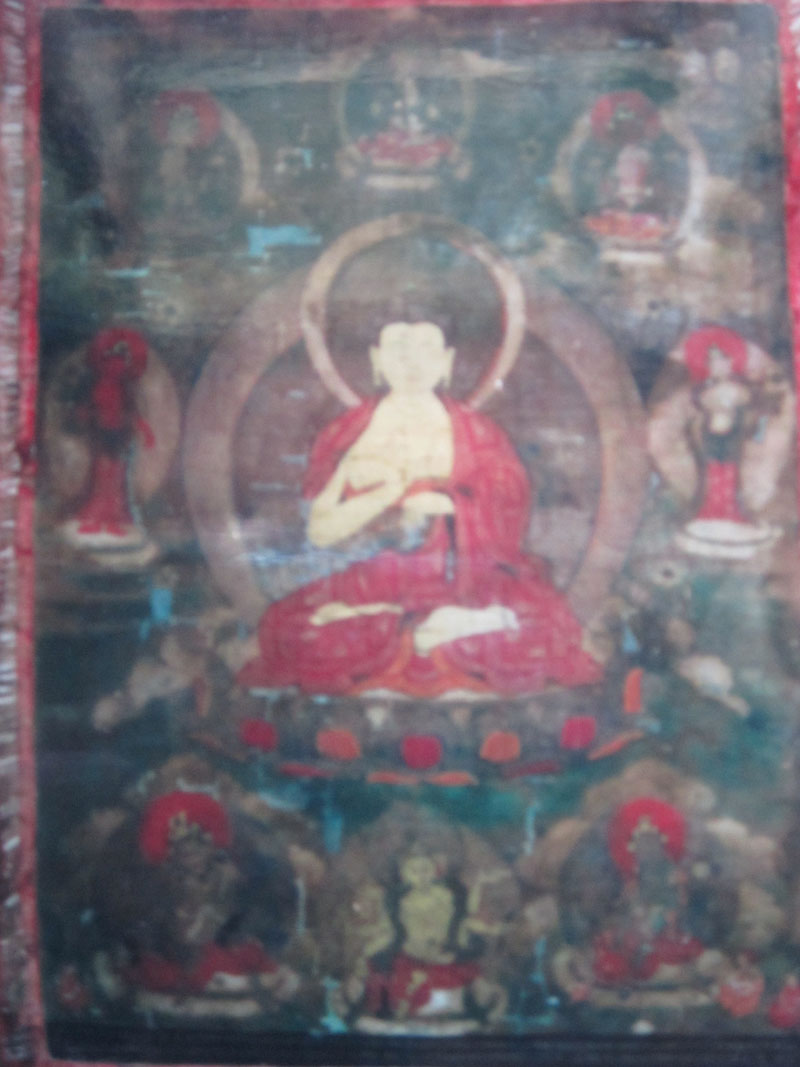
.jpg)
.jpg)
